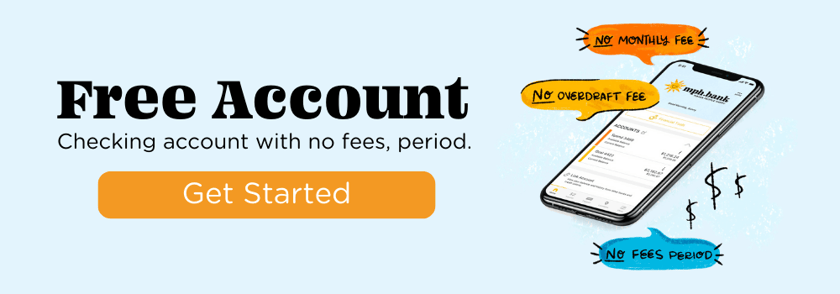Imagine waking up one morning to news that your bank has shut down overnight. Your balance? Gone. Your deposits? Vanished into the digital void. Sounds like a nightmare, right? Well, in 2008, when Washington Mutual collapsed, over $300 billion in assets were wiped out. But here’s the silver lining: not a single insured depositor lost a dime. That’s the power of FDIC insurance.
Related Article: What's the Difference Between Online and Traditional Banking?
With the rise of online banking, people are asking the right questions: Is my money safe? Is FDIC insurance different for online banks? How can I be sure my deposits are protected? This guide gives you the exact steps to verify that your online bank is FDIC-insured—and what to do if it’s not.
Let’s dive in.
What Is FDIC Insurance, and Why Does It Matter?
The Federal Deposit Insurance Corporation (FDIC) is a U.S. government agency that protects depositors from losing money if a bank fails. Since its creation in 1933, no insured depositor has ever lost a single cent of their covered funds.
Here’s what FDIC insurance covers:
- Up to $250,000 per depositor, per bank, per ownership category.
- Checking accounts, savings accounts, money market deposit accounts, and CDs.
- Automatically provided—no need to sign up.
Here’s what it doesn’t cover:
- Stocks, bonds, or mutual funds (even if purchased through a bank).
- Cryptocurrency holdings.
- Safe deposit box contents.
So, if your bank fails and it’s FDIC-insured, you get your money back—usually within a few days. No stress. No panic. Just guaranteed security.
Are Online Banks FDIC-Insured?
Short answer: Most are—but not all.
Online banks can be just as safe as brick-and-mortar banks if they are FDIC-insured. The problem? Some online-only banks, fintech apps, and financial services companies look like banks but aren’t insured. That means if they collapse, your money is gone.
So how do you know for sure? Keep reading.
Step 1: Verify Your Online Bank’s FDIC Insurance Status
You wouldn’t hand over your life savings to a stranger on the street. Don’t do it with an online bank either.
Here’s how to confirm if your online bank is FDIC-insured:
1. Check the Bank’s Website (But Don’t Stop There!)
Legitimate online banks proudly display their FDIC membership. Look for phrases like:
- “Member FDIC”
- “FDIC Insured”
- The official FDIC logo
⚠️ Warning: Just because a website claims to be FDIC-insured doesn’t mean it actually is.
2. Use the FDIC’s BankFind Tool
The only way to 100% verify an online bank’s FDIC status is by checking directly with the FDIC:
- Go to FDIC BankFind
- Enter the bank’s name
- Confirm its insurance status
3. Look for the Official FDIC Certificate Number
Every insured bank has a unique FDIC certificate number. If the bank can’t or won’t provide this? Red flag. Move on.
4. Check for Third-Party Relationships
Some fintech apps (like Chime or Cash App) aren’t banks but offer FDIC insurance through partner banks. That’s fine—but make sure you know which bank actually holds your deposits. Look up that bank on FDIC BankFind.
Step 2: Confirm How Much of Your Money Is Protected
FDIC coverage isn’t unlimited. It’s capped at $250,000 per depositor, per bank, per ownership category. If you have more than that, here’s how to ensure full coverage:
1. Spread Deposits Across Multiple Banks
FDIC insurance applies per bank. If you have $500,000, split it between two FDIC-insured banks for full protection.
2. Open Joint Accounts
FDIC coverage doubles for joint accounts. A husband and wife can be insured up to $500,000 in a joint account at one bank.
3. Use Different Ownership Categories
Each ownership category—single accounts, joint accounts, trusts, and retirement accounts—has its own $250,000 limit per bank.
Pro Tip: Use the FDIC’s EDIE Calculator to see exactly how much of your money is protected.
Step 3: Watch for Red Flags and Avoid Fake Banks
Not all online banks are trustworthy. Here’s how to spot fraud:
🚩 1. No FDIC Mentions Anywhere
A real bank flaunts its FDIC insurance. If you can’t find it on their website? Big problem.
🚩 2. Suspiciously High Interest Rates
If a bank promises way above market rates, it might be a scam. Check its legitimacy first.
🚩 3. Poor Website Security
- Does the URL start with “https”? (If not, run!)
- Is there a lock icon next to the web address? If not, your data may not be safe.
🚩 4. No Customer Support
If a bank doesn’t have a working phone number or a real support team? Stay away.
What If Your Online Bank Isn’t FDIC-Insured?
If you find out your online bank isn’t FDIC-insured, here’s what to do immediately:
- Withdraw your money. Move it to a legitimate FDIC-insured bank.
- Report the institution. Contact the Consumer Financial Protection Bureau (CFPB) if you suspect fraud.
- Check alternatives. Many well-known online banks (like Ally, Discover, and Capital One 360) are fully FDIC-insured.
Conclusion: Your Money Deserves Protection
Your money isn’t just numbers on a screen—it’s your hard-earned savings, your emergency fund, your future. Don’t take risks with it. Always verify FDIC insurance before trusting an online bank.
🔹 Check the bank’s website (but verify independently).
🔹 Use the FDIC BankFind tool.
🔹 Confirm coverage limits to protect your full balance.
🔹 Watch for red flags and avoid shady online banks.
With these steps, you can confidently enjoy the convenience of online banking—without worrying about your money disappearing overnight.
Want more insights on financial security? Subscribe to our newsletter for expert tips delivered straight to your inbox!
What do fish use as currency to purchase anything?
Sand Dollars! Sign up to receive important information on banking, financial tips, and jokes like this directly to your inbox










